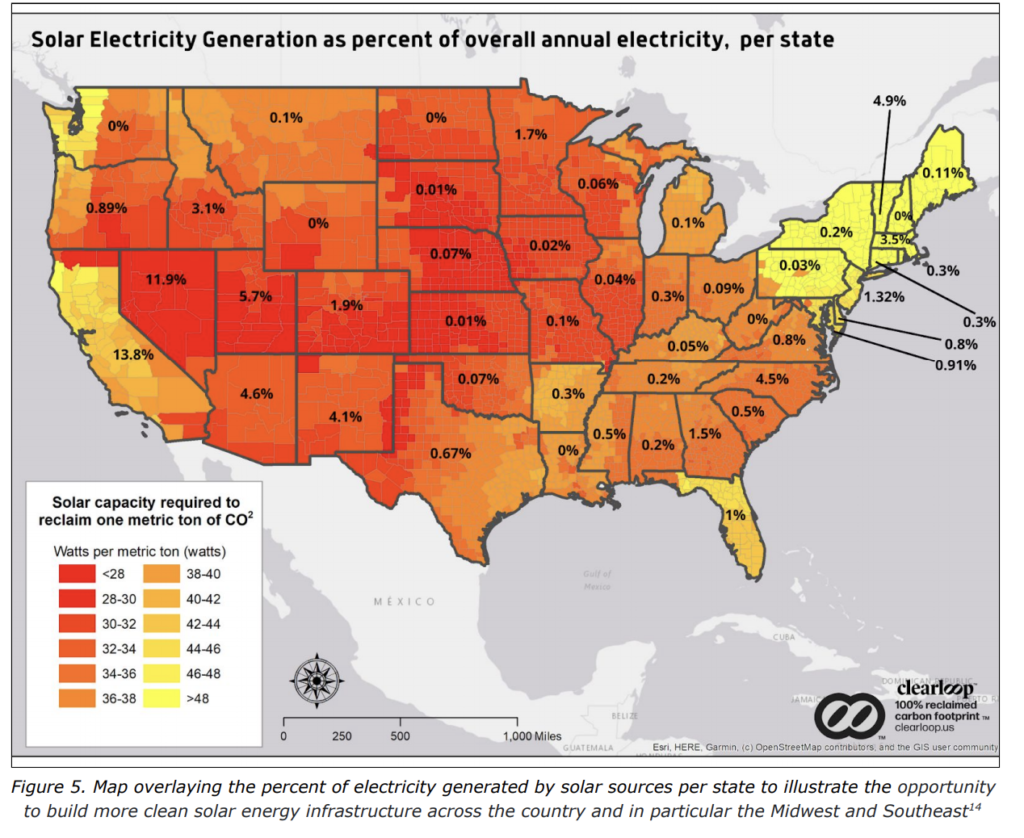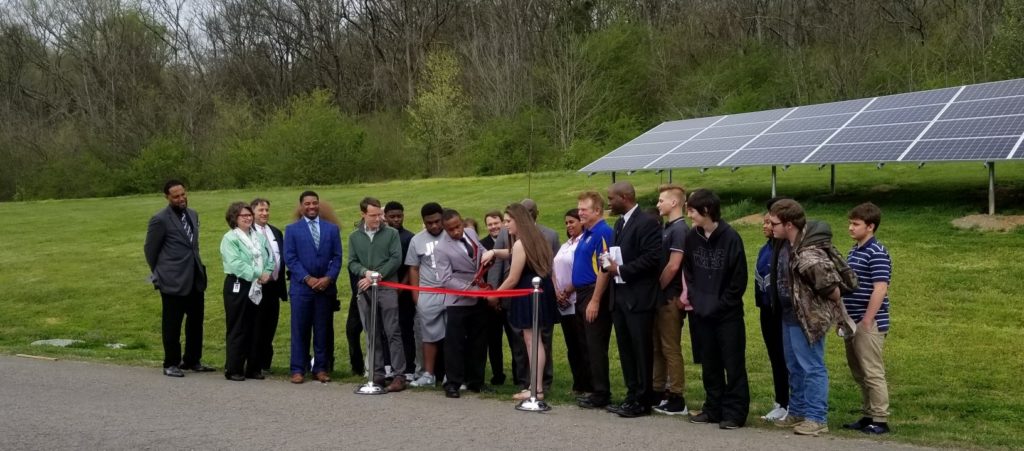For a long time, Nashville was a sunny spot in the hot and humid Sunbelt that got almost none of its energy from the sun. Regrettably, the state of Tennessee got only .2% of its electricity from solar energy as of 2018, compared to a U.S. average of 1.5%, according to the latest data available from the Environmental Protection Agency.
The electricity grid, the network of interconnecting power transmission lines that deliver electricity, is the dirtiest in the South and Midwest, according to Laura Zapata, founder of Clearloop Corp. in Nashville, which helps mid-sized and small businesses to buy into solar projects to offset their carbon footprint. Carbon dioxide is a greenhouse gas that contributes to climate change and is produced by certain activities such as burning coal to produce electricity. “We can do better,’’ Zapata said. “We’re in the Sunbelt.”

Organizations such as Vanderbilt University and Facebook are indeed pushing the area’s utilities to do better, with dramatic results. Plus, the prices for solar panels have fallen in recent years, making solar economically competitive and in some cases cheaper than other sources of power, according to the financial advisory and asset management firm Lazard.
That’s driving a boom in solar energy. Energy from the sun accounted for 43% of all new electricity generating capacity in the United States in the third quarter of 2020, beating all other generation technologies, according to consulting and research firm Wood MacKenzie. Nashville is determined not to miss out any longer.
In fact, in November, Metro Nashville announced a joint deal with Vanderbilt University to pay for a 125-megawatt solar array project in Tullahoma, Tennessee, agreeing to buy the solar energy back from the region’s power generator, the Tennessee Valley Authority.

The project is estimated to create 500 new jobs and result in $6.8 million in health benefits by reducing harmful pollution, according to The Tennessean. The solar panels will help Metro Nashville reach its goal of reducing greenhouse gas emissions from city operations by 40% in 2030 and by 80% in 2050.
Earlier in 2020, Vanderbilt University signed a deal with the TVA to buy 35 MW of renewable energy from a solar farm in Bedford County, Tennessee. It has a goal of powering its campus entirely through renewable energy and of being carbon neutral by 2050.
It’s not just universities and cities that are signing up for solar. So are the social media giant Facebook and the global search engine Google, both of which inked deals with the TVA in recent years to power enormous new data centers in Tennessee and Alabama with renewable energy.
Both of those companies pressure utilities and public officials to build solar in exchange for their investments. For example, Facebook had a goal of reaching net-zero carbon emissions and 100% renewable energy for its operations by 2020.

Just because big corporations and organizations are getting the solar generation they demand, that doesn’t mean individuals, small organizations and schools can’t. “If you want it, you can get it,’’ said Jason Carney, founder and CEO of Energy Electives in Nashville. “There is financing out there.”
Here are some ways to get involved in Tennessee’s solar movement.
- Consider weatherizing your home or business to reduce your energy use. That’s a smaller dollar ticket item with a big reward, said Carney.
- Consider buying solar energy from a community solar project in exchange for credits against your local utility bill, such as Nashville Electric Service’s Music City Solar or Middle Tennessee Electric’s Cooperative Solar.
- If you buy electricity, it’s likely you can participate in any number of TVA programs such as Green Power Switch, where you buy renewable energy credits through your local utility.
- The Nashville business Clearloop, whose chairman is former Gov. Phil Bredesen, offers a simple way for small and mid-sized businesses and organizations to get a full assessment of their carbon footprint and offset that carbon by funding a solar project, the first of which is in Jackson, Tennessee.
- Assess your home’s feasibility for solar and costs by contacting a qualified local contractor, for example, one with staff certified by the North American Board Certified Energy Practitioners. Although the TVA recently ended its rooftop solar buy-back program Green Power Providers, there’s still an opportunity to build solar. Local contractor LightWave Solar describes the options and costs here.
- Don’t forget to advocate for more solar energy. Write letters to your city councilmember and at-large members, the mayors, the TVA and NES boards, and others who can influence policy in favor of more renewable energy.
If you’re an educator, you might want to engage your students in the growing movement and job training in renewable energy and sustainability.
- Urban Green Lab offers sustainability curricula developed with Vanderbilt University’s Peabody College of Education and offers support for teachers in local schools. It also partners with the U.S. Green Building Council to certify teachers as Green Classrooms Professionals.
- The U.S. Green Building Council has programs to help teachers master STEM concepts such as Building Learners, where students collect and analyze investigations around energy, health and transportation, and the subscription-based Learning Lab with its 600 hands-on lessons.
- Consider getting your students to build their own solar project. Carney of Energy Electives did that with the students of Whites Creek High School in Nashville in 2019.
With President Joe Biden in office, solar energy may get an even bigger boost in the Nashville region. The president has proposed $2 trillion in infrastructure and clean energy investments across multiple sectors, from transportation to housing to electricity. It’s the perfect time to join the solar movement and be a part of Nashville’s solar revolution.